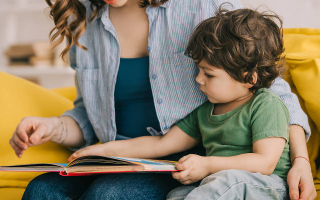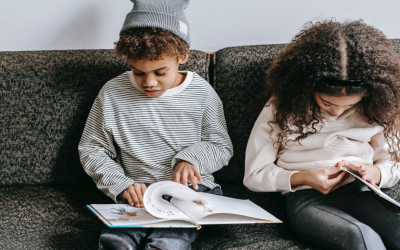Introduction
In today’s globalized world, being bilingual or multilingual is becoming more and more important. For parents who want to raise bilingual kids, or for those who simply want to give their children a head start in language learning, personalized books can be an effective tool. Personalized books are books that are tailored to a specific child, incorporating their name, interests, and sometimes even their likeness. When used for language learning, personalized books can provide a unique and engaging learning experience.
What are Personalized Books?
Personalized books are books that are created specifically for a particular child, incorporating details such as their name, age, hometown, and interests. In many cases, the child’s likeness can also be added to the illustrations. These books can be purchased online or in stores, and are available in a variety of formats, from board books for babies to chapter books for older kids.
How Do Personalized Books Work for Language Learning?
Personalized books can be used in a number of ways to support language learning. For example, they can be used to introduce new vocabulary, reinforce grammar concepts, or provide opportunities for pronunciation practice. By incorporating the child’s name and interests, personalized books can also help to create a sense of connection and engagement, which can enhance motivation and retention.
Benefits of Personalized Books for Kids Learning a Second Language
Boosts Vocabulary Acquisition
One of the most significant benefits of personalized books for language learning is that they can help to boost vocabulary acquisition. By incorporating new words into a story that is tailored to the child’s interests, personalized books can make learning new vocabulary more engaging and memorable. This can help to accelerate language learning and improve overall fluency.
Improves Comprehension and Retention
Because personalized books are tailored to the child’s interests and level of language proficiency, they are more likely to be comprehensible and engaging. This can help to improve comprehension and retention of new concepts and vocabulary. Additionally, because personalized books can be read and reread, they provide opportunities for repetition and reinforcement.
Enhances Motivation and Engagement
Personalized books can be highly motivating and engaging for kids, especially those who may be reluctant learners or who struggle with traditional language learning methods. By incorporating the child’s name and interests, personalized books can help to create a sense of ownership and investment in the language learning process.
Provides Opportunities for Pronunciation Practice
Personalized books can also provide opportunities for pronunciation practice, which is a critical component of language learning. By hearing and repeating new words and phrases in the context of a story, kids can improve their pronunciation and fluency.
Facilitates Cultural Understanding
Finally, personalized books can help to facilitate cultural understanding by introducing kids to stories and characters from different cultures. By learning about different customs, traditions, and ways of life, kids can develop a deeper appreciation and understanding of other cultures.
Tips for Choosing Personalized Books for Language Learning
When choosing personalized books for language learning, it is important to consider the following tips:
- Choose books that are appropriate for the child’s age and language level. The content and vocabulary should be challenging but not overwhelming.
- Look for books that incorporate the child’s interests and hobbies. This can help to create a sense of connection and engagement with the material.
- Consider books that introduce cultural themes and concepts. This can help to broaden the child’s understanding of different cultures and customs.
- Look for books that provide opportunities for repetition and reinforcement. The more a child is exposed to a new language, the more likely they are to retain it.
- Choose books that are visually appealing and well-illustrated. This can help to keep kids engaged and motivated.
Conclusion
In conclusion, personalized books can be an effective tool for kids learning a second language. By incorporating the child’s name, interests, and sometimes even their likeness, personalized books can create a unique and engaging learning experience that can boost vocabulary acquisition, improve comprehension and retention, enhance motivation and engagement, provide opportunities for pronunciation practice, and facilitate cultural understanding. When choosing personalized books for language learning, it is important to consider the child’s age and language level, interests, cultural themes, and opportunities for repetition and reinforcement.
Complete our 2-minute test for parents to find the best book for your bilingual kid!







